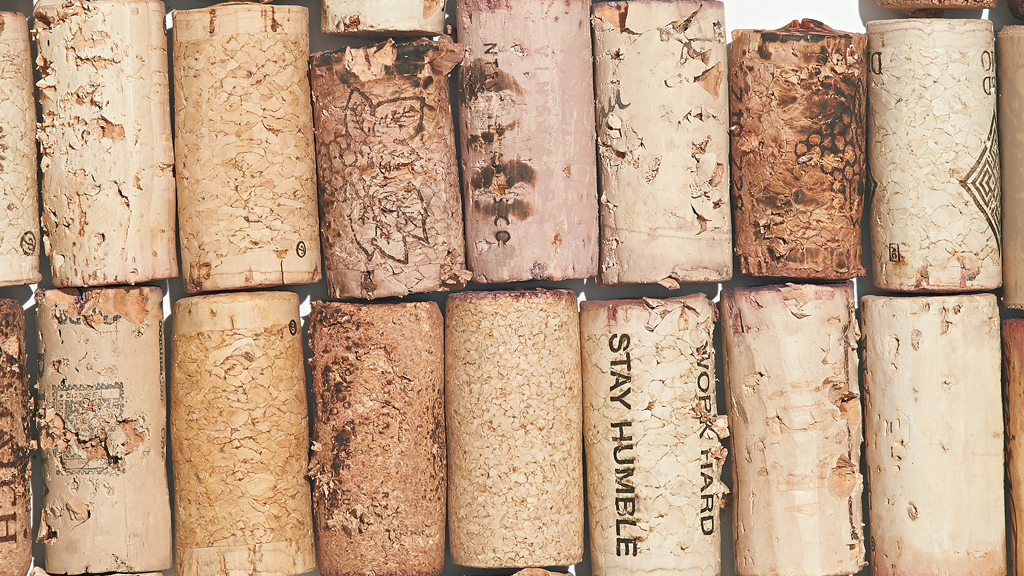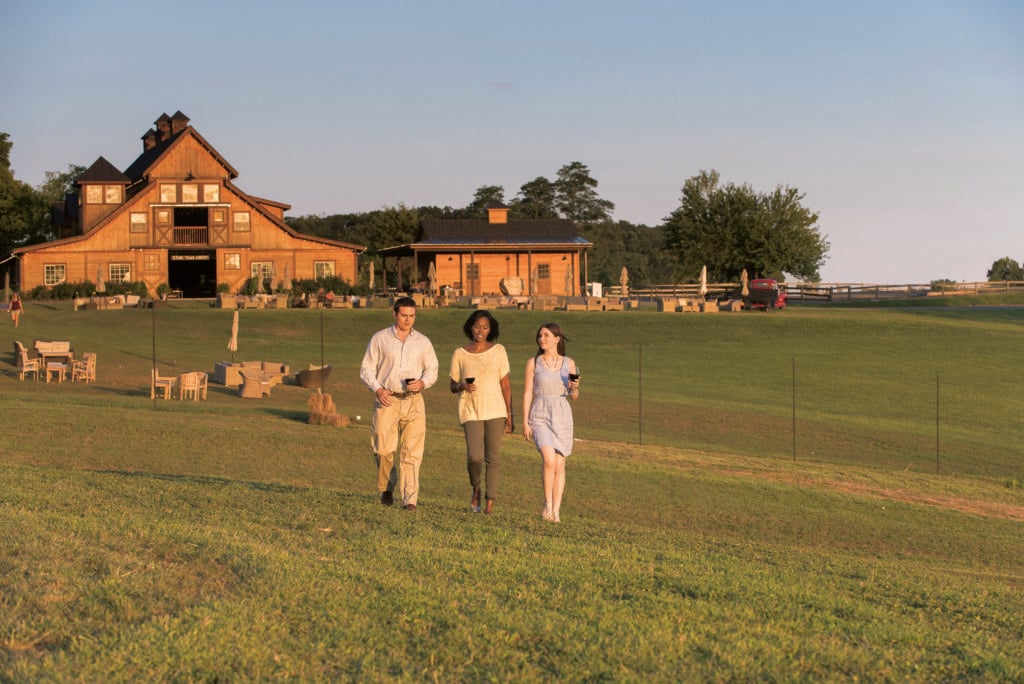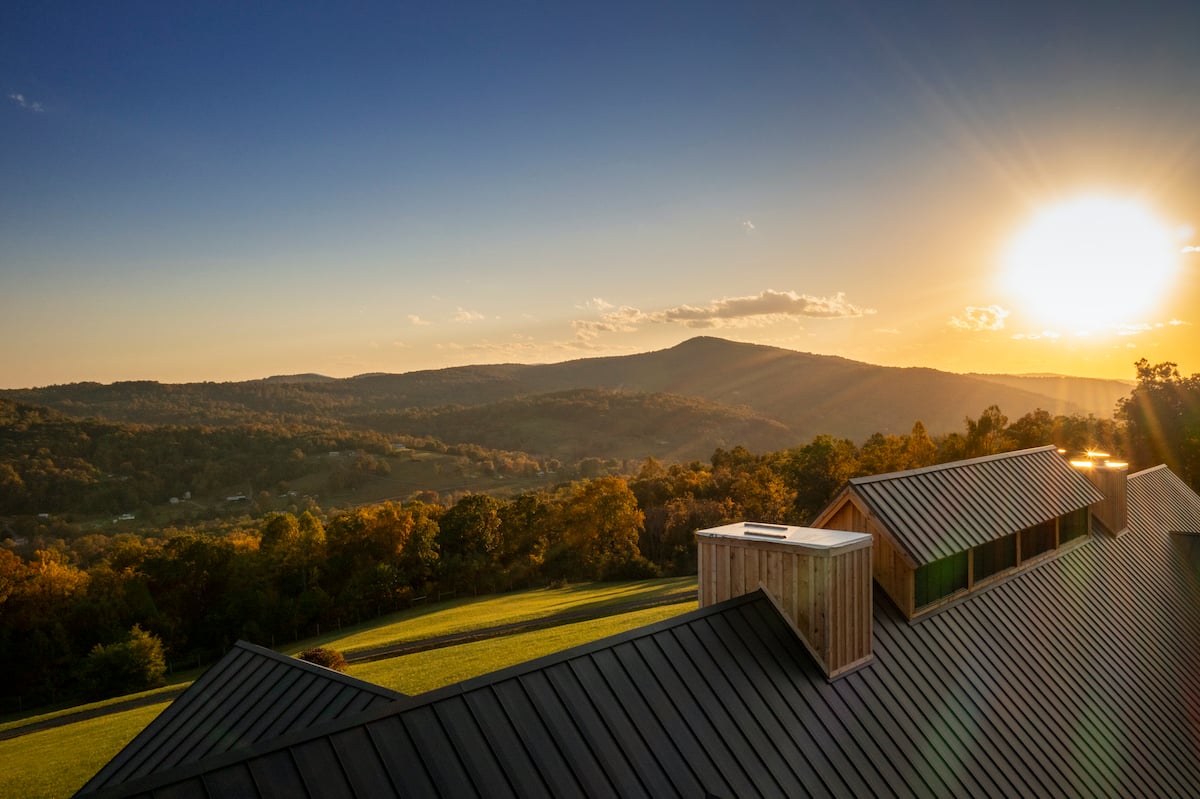Wineries are expensive to start and complicated to run, and it can take years to turn a profit. Even so, each year an average of 15 new wineries open in Virginia. Here’s how the best survive—and how that benefits customers.
The joke goes like this: “How do you make a million dollars in the winery business? Start with $2 million.”
Vineyard owners will be the first to tell you the challenges are steep. A bud-killing spring frost last year decimated as much as 90 percent of Chardonnay and other white grapes in some areas, compounding an existing grape shortage. Soon, Virginia’s winery count will surpass 300 (only four states have more), meaning some are feeling the competitive squeeze. Here are ways the most innovative wineries are luring more business.
1. Cider and beer. As sales of hard cider and craft beer grow, wineries such as Cobbler Mountain Cellars, Fabbioli Cellars, and Corcoran Vineyards are now making cider. Corcoran also produces beer, as does Barrel Oak Winery, which opened the Barrel Oak Farm Taphouse last year.
2. Better wine clubs. Member clubs can be a winery’s golden goose—some sell up to 25 percent of their inventory through quarterly shipments to these loyal fans, without having to pour a drop. Rappahannock Cellars and Old Westminster Winery have gone beyond the standard “free tastings for members” benefit to include guests. Rappahannock also has upped case discounts to an unheard-of 50 percent. Stone Tower Winery’s VIP perks include exclusive access for members and guests from 6 to 9 pm on Fridays, with live music and food trucks. Breaux Vineyards offers a members-only tasting room and patio.
3. Satellite tasting rooms. Paradise Springs Winery in Clifton recently debuted a pop-up shop at the Reston Metro, helping it sell more wine and build visibility. Morais Vineyards—in out-of-the-way Bealeton, Virginia—is opening an offshoot, Aroma, in Old Town Manassas. Boxwood Winery in Middleburg was one of the first with an off-site strategy, opening Tasting Room wine bars in Reston and National Harbor.
4. Loyalty rewards. Chateau O’Brien’s customers save corks to earn prizes—from used wine barrels (50 corks) to a week at an Outer Banks beach house (400). The Winery at La Grange recently launched an app-based loyalty program that awards club members redeemable points for purchases and events attended.
5. Tech investment. The Square app works great for a small winery that needs to cash out a customer buying wine. But a destination winery such as Potomac Point has guests moving, and buying, all over—in the lounge, the restaurant, the tasting room, the gift shop. That winery invested in advanced point-of-sale technology: Once you’re entered into the system, you can taste, shop, and dine without repeatedly pulling out your wallet.
6. Events galore. Live music on weekends has become ubiquitous, so wineries are adding other draws. (For a list of some favorite events, from movie nights to grape stomps, see page 98.) Coy Ferrell, who handles marketing for Bogati Winery, Veramar Vineyard, and James Charles Winery, says all three now host up to 15 events a year.
Read more from our winery guide:
This article appears in the May 2017 issue of Washingtonian.



















